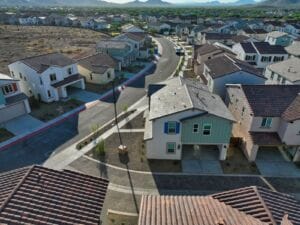Nonresidential construction spending fell 2.1 percent in April according to analysis of U.S. Census Bureau data released Wednesday by Associated Builders and Contractors (ABC). Nonresidential spending totaled $688.2 billion on a seasonally adjusted, annualized rate.
Much like last month, the sting of a disappointing headline number was mitigated by upward revisions to the previous two months of data. March’s estimate was revised from $695.7 billion to $702.6 billion, while February’s estimate saw a 0.1 percent increase. March represents the first month in which spending exceeded $700 billion since March 2009.
“Nonresidential construction spending growth continues to struggle to maintain momentum,” said ABC Chief Economist Anirban Basu. “The amount of nonresidential construction value put in place has expanded by just 2.5 percent over the past year, with private spending up 3.4 percent and public spending up just 1.4 percent. While many will primarily attribute this to a sluggish U.S. economy, one that has expanded by less than 1.5 percent during each of the last two completed calendar quarters, there are other factors at work.
“Lower materials prices are embodied in the value of completed work,” said Basu. “Though commodity prices have been firming recently, commodity prices had been in decline for more than a year. Moreover, in some communities, nonresidential construction is facing severe constraints given an insufficient number of qualified workers. Both factors would tend to constrain the level of observed growth in nonresidential construction spending.
“There may also be growing skittishness among private developers, who have become increasingly concerned by possible overbuilding in commercial, office and lodging markets,” warned Basu. “Both lodging and commercial construction spending dipped in April. This hesitancy is reflected in many ways, including in the Architectural Billings Index, which has struggled to consistently stand meaningfully above its threshold value of 50. Public spending also remains lackluster as many states deal with underfunded pensions and ballooning Medicaid costs.”
Only five of 16 nonresidential construction sectors experienced spending increases in April on a monthly basis:
- Religious-related spending expanded 9.6 percent from March 2016 and 7.3 percent from April 2015.
- Spending in the public safety category grew 5.2 percent on a monthly basis but fell 6.2 percent on a yearly basis.
- Office-related spending expanded 1.6 percent for the month and 20.3 percent for the year.
- Amusement and recreation-related spending expanded 0.8 percent month-over-month and 8.3 percent year-over-year.
- Spending in the power category rose by 0.3 percent for the month and 0.6 percent from April 2015.
Spending in 11 of the nonresidential construction subsectors fell in April on a monthly basis:
- Spending in the communication category fell 7.7 percent from March 2016 and is down 16.4 percent from April 2015.
- Highway and street-related spending fell 6.5 percent on a monthly basis but is up 4 percent on a yearly basis.
- Commercial-related spending dipped 3.7 percent for the month but is up 6.8 percent from April 2015.
- Spending in the health care category fell 3 percent from March 2016 and is down 0.6 percent from the same month one year ago.
- Educational-related spending dropped 2.4 percent month-over-month but is up 5.4 percent year-over-year.
- Spending in the lodging category fell 2 percent on a monthly basis but is up 24.6 percent on a yearly basis.
- Transportation-related spending fell 1.7 percent since March 2016 and is down 1 percent from April 2015.
- Sewage and waste disposal-related spending fell 1.4 percent for the month but is up 1 percent from April 2015.
- Manufacturing-related spending fell 1.4 percent month-over-month and 9.8 percent year-over-year.
- Spending in the conservation and development category dipped 1.2 percent for the month and 6.5 percent year-over-year.
- Water supply-related spending fell 0.5 percent on a monthly basis and 6.5 percent on a yearly basis.




